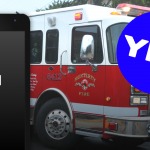With the rise in video relay’s popularity, there are rules put in place by the FCC to protect consumers and their providers (Sorenson, ZVRS, Purple, Convo, etc.) The list below are some of the most recent rules and their interpretations:
(NOTE: “Providers” are companies that provide the video relay service and equipment, such as Convo, Sorenson, ZVRS, and Purple.)
It’s actually illegal to call someone who is in the same room as you.
The FCC prohibits calling a person who is in the same room as you; there is a different service for that called Video Remote Interpreting (VRI.) VRS is for calling someone who is in another place; VRI is for an interpreter to assist with communication in the same room.
The VRS system cannot be used for any telemarketing or (900) calls, the providers cannot offer operator assistance or pay-per-calls. However, telemarketers can call people who use VRS.
VRS is a free service for the deaf and speech disabilities communities and therefore may not be used for profit; for telemarketers, it is legal for them to call you through your VRS because their phone service is not VRS.
All calls are on a first come, first serve basis and 8 out of 10 calls must be answered within 2 minutes.
For the providers, every call is treated equally and is on a first-call, first-answer basis. This is a law put in place to ensure that calls are not ignored simply because of who the caller is or their location. Also, providers must answer at least 8 out of 10 calls within 120 seconds! That means wait for 2 minutes and if no one picks up, hang up and try again.
Customers must notify their provider if they are leaving the United States on a trip.
The FCC currently requires all customers to tell their providers if they plan to leave the country on a trip. This is so the provider can keep customers’ VRS active for 28 days; after 28 days the VRS is no longer available for international calls until the customer returns to the United States.
Every VRS interpreter announces themselves when a hearing caller calls.
Every time a hearing caller calls a deaf customer, the VRS provider picks up first and the interpreter will announce “this is a relay service and the person you are calling is using American Sign Language.” This is so the hearing caller is informed as well to make the process smoother.
VRS Providers cannot charge you for services.
Providers like Sorenson, ZVRS, Purple, or Convo cannot set up service plans to charge customers for calls, minutes, or number of calls. They are already funded by the FCC for accessible communications for the disability community; there is no reason for the providers to charge you for their service.
However, if an able-bodied person wishes to use VRS for communication, they may have to pay for the device.
All VRS operate by using the internet.
Remember how the providers cannot charge you for service because they’re already being funded? This is where the customer is responsible for setting up internet service in their home for their videophone to connect through. VRS coverage is nationwide while internet service companies are different by region, meaning your internet provider can be different from your friends’ in another state.
However, for VRS services on mobile devices (iPhone, Android, laptop, etc,) calls can be made wherever there is WiFi.
The United States and Canada have different VRS systems!
Before, the Canada and the United States had common VRS systems. Now Canada has their own VRS system to better serve their ASL and LSQ (Langue des Signes Québécoise; Quebec Sign Language) communities through SRV Canada.
Sources:



